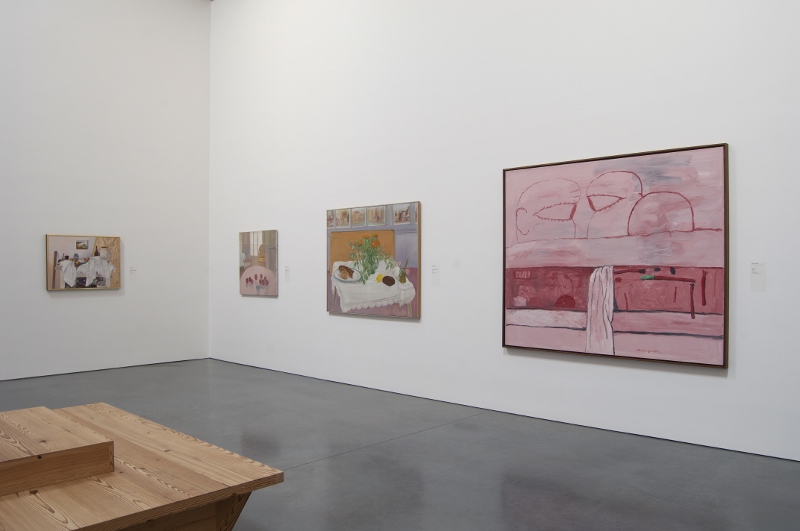Still-life painting typically takes as its subject everyday objects arranged in the artist’s studio. In this gallery various approaches to still life are represented, from the more traditional style of artists such as Sheridan Lord and Jane Wilson, to the abstract references by Philip Guston and Michael Combs.
Still-life subjects were an important genre in eighteenth- and nineteenth-century America and artists still look to these earlier models. In the 1860s, Sag Harbor portrait painter Hubbard Latham Fordham became the keeper of the old wooden lighthouse at Cedar Island. Looking for a new direction, he gathered an array of shellfish fresh from the surrounding waters, placed them on a windowsill and meticulously rendered them in every detail. Through the window we can see how he expanded the still life to include a view south to Sag Harbor village. Canvases by Fairfield Porter, Nell Blaine, Jane Freilicher, and Jane Wilson expertly orchestrate table-top assemblies of fruit, flowers, and studio materials. Sheridan Lord, better known for setting up his easel out-of-doors, retreated to the studio in cold weather. His carefully staged presentation includes not only the pristine objects in the still-life set up, but also a completed painting on the wall and a glimpse under the table that reveals the tools of the trade. Dan Rizzie creates an exotic still life with a single poppy, activating the surface of the painting with non-traditional materials and techniques.
Philip Guston began as an Abstract Expressionist but in the late 1960s started to paint in a figurative—some said cartoonish—mode, and his canvases contain enormous symbolic and autobiographical weight. In Visitors, the studio, signified by paintbrushes and a white wiping rag, is overrun by bulbous-headed creatures with huge eyes, suggesting the artist’s dread of critical scrutiny. Joe Zucker focuses on the studio as well, as he shows the arrival of an enormous roll of canvas. He has used cotton to build up the surface of the painting, emphasizing the material of the canvas and challenging the idea of a flat picture plane.
A fourteen-foot gunning skiff made of white cedar and oak lay in a corner of Michael Combs’s Southold studio for years—a legacy from his grandfather. It was a constant reminder to the artist that he hails from a long line of Long Island boat builders, decoy makers, fisherman and market gunners who for five generations made their living on the Great South Bay. Combs confronts his own mixed feelings about this heritage by combining this skiff with an elongated swan’s neck, at once graceful and disturbing, and surrounding the head with empty shell casings to create a still life of poignant beauty.
The Permanent Collection 2015. Art. Illuminated. is made possible, in part, by the generous support of Maren Otto, the Joseph and Sylvia Slifka Foundation, Suzanne and Bob Cochran, Linda and Gregory Fischbach, Christopher Harland and Ashley Leeds, Calvin Klein Family Foundation, Melva Bucksbaum and Raymond Learsy, and Galerie Lelong. The Museum’s programs are made possible, in part, by the New York State Council on the Arts with the support of Governor Andrew M. Cuomo and the New York State Legislature, and by the property taxpayers from the Southampton School District and the Tuckahoe Common School District.


